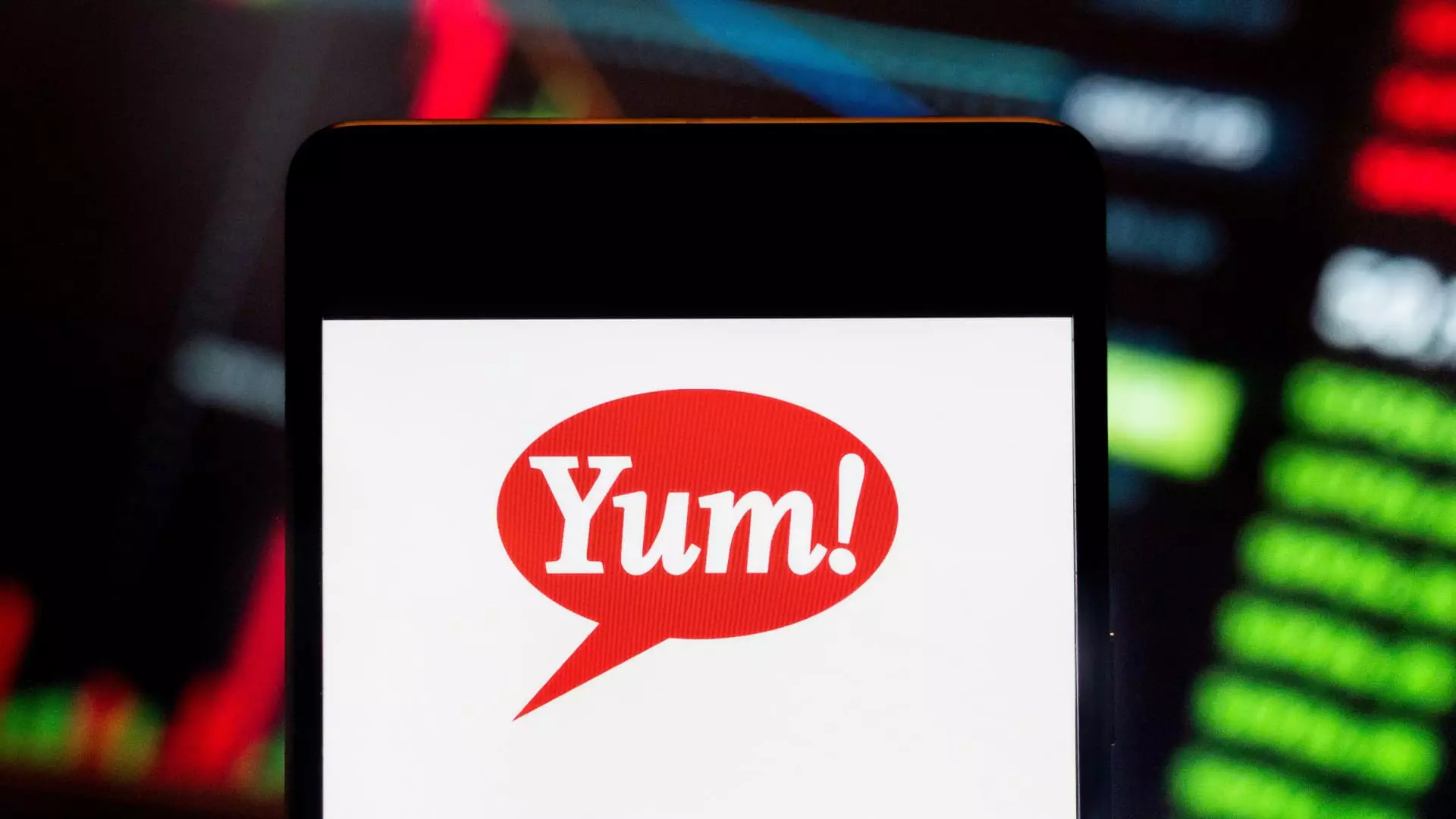In an environment where consumer sentiment fluctuates, Yum Brands has experienced a setback, reporting quarterly earnings and revenue that fell short of Wall Street projections. This underperformance is particularly evident in the popular chains under its umbrella, KFC and Pizza Hut, which have both seen sales drops that were more significant than anticipated. CEO David Gibbs addressed these challenges during the company’s recent earnings call, emphasizing that various international markets are facing a complex consumer landscape that has adversely impacted overall sales.
For the third quarter, Yum Brands posted earnings per share of $1.37 adjusted, a slight dip from the $1.41 that analysts had predicted. Additionally, the revenue for the quarter came in at $1.83 billion, missing expectations of $1.90 billion. This disappointing performance is indicative of broader issues the company is grappling with, including economic conditions and market competition.
Yum’s quarterly net income reported a decline to $382 million, or $1.35 per share, compared to $416 million, or $1.46 per share, from the same quarter last year. Excluding notable items, the adjusted earnings per share remained at $1.37. The 7% rise in net sales to $1.83 billion was insufficient to mask the underlying struggles, with global same-store sales dropping by 2%. This downturn was primarily driven by KFC and Pizza Hut, who both reported declines of 4% in same-store sales.
The economic pressures faced by the company cannot be overstated. CEO Gibbs noted that factors such as political instability and diminished consumer confidence weighed heavily on sales. In particular, the ongoing conflict in the Middle East has inflicted a noticeable toll on Yum’s operations, especially since the last quarter of 2022.
Particular markets such as the Middle East, Indonesia, and Malaysia have seen KFC’s same-store sales plummet by as much as 45%. With the decline in the U.S. market also reflecting a 5% decrease, KFC appears to be losing its competitive edge domestically, particularly to rivals like Popeyes, which has recently overtaken KFC as the second-largest chicken chain in the United States.
In contrast to KFC’s struggles, Pizza Hut has shown even more marked declines in its international markets, with an alarming 6% drop in same-store sales abroad. The U.S. market fared slightly better, experiencing only a 1% decline. To counteract this downward trend, Pizza Hut has resorted to discounts and promotions in specific markets such as China, India, and several countries in the Middle East.
While KFC and Pizza Hut faced troubleshooting, Taco Bell emerged as a bright star within Yum’s portfolio, showcasing a 4% growth in same-store sales. This achievement is attributed to the successful launch of new menu items like the Cheesy Street Chalupas and the $7 value meal, as well as the returning Big Cheez-It, which have collectively contributed to enhanced consumer value perception.
Highlighting Taco Bell’s success, Gibbs noted that the fast-food chain outperformed its industry peers in value perception during the third quarter, providing a crucial buffer against the industry-wide sales downturn. This resilience emphasizes Taco Bell’s ability to adapt to consumer needs in a rapidly changing market landscape.
Yum Brands is entering a pivotal period requiring strategic adjustments to regain its footing. With KFC aiming to emphasize value in the upcoming quarter and Pizza Hut exploring further discounts, the company is clearly pivoting to address its recent challenges. The underlying question remains: can these strategic shifts reverse the current sales trends and re-establish growth or will other external pressures continue to pose significant barriers? As the fast-food landscape evolves, the ability of Yum Brands to adapt will be essentially tested. Stakeholders and consumers alike will be watching closely to see how these initiatives take shape in the forthcoming quarters.

